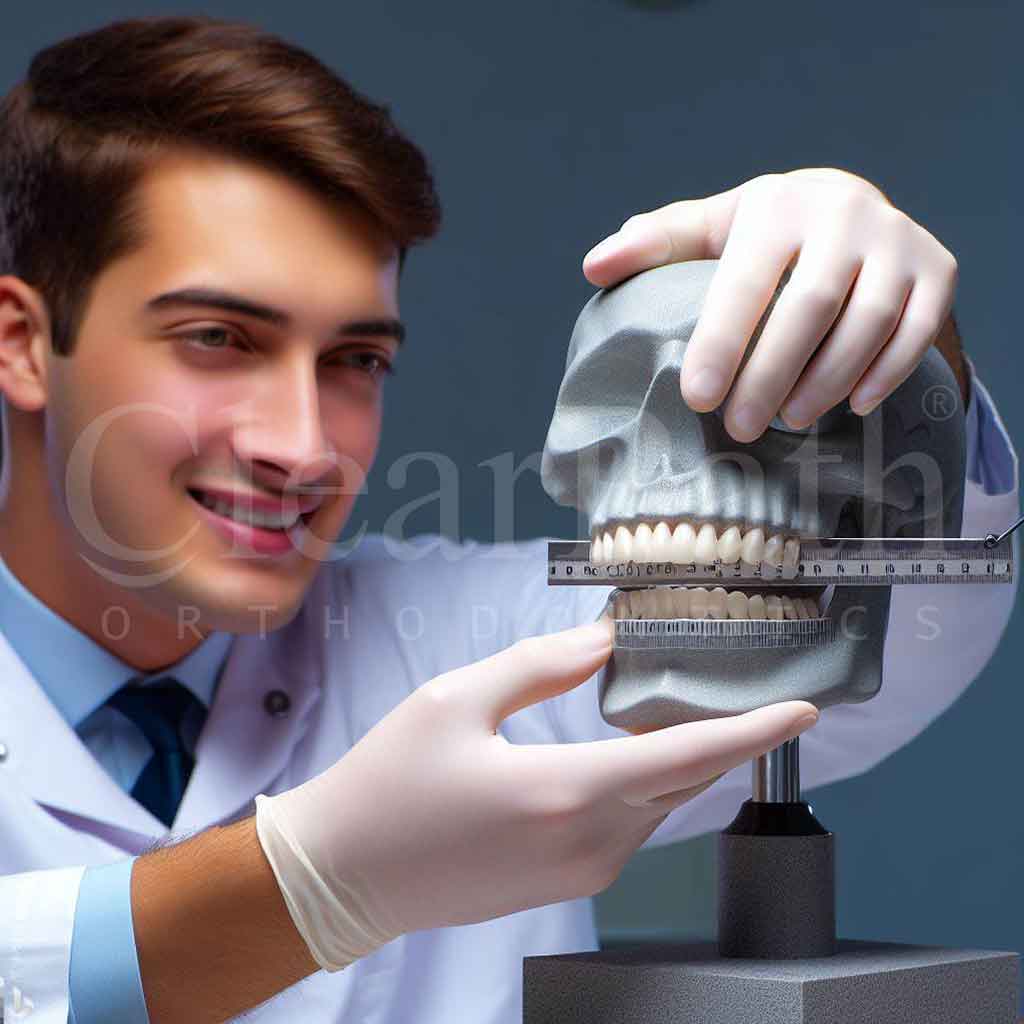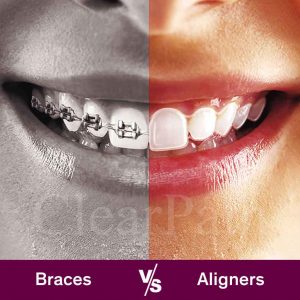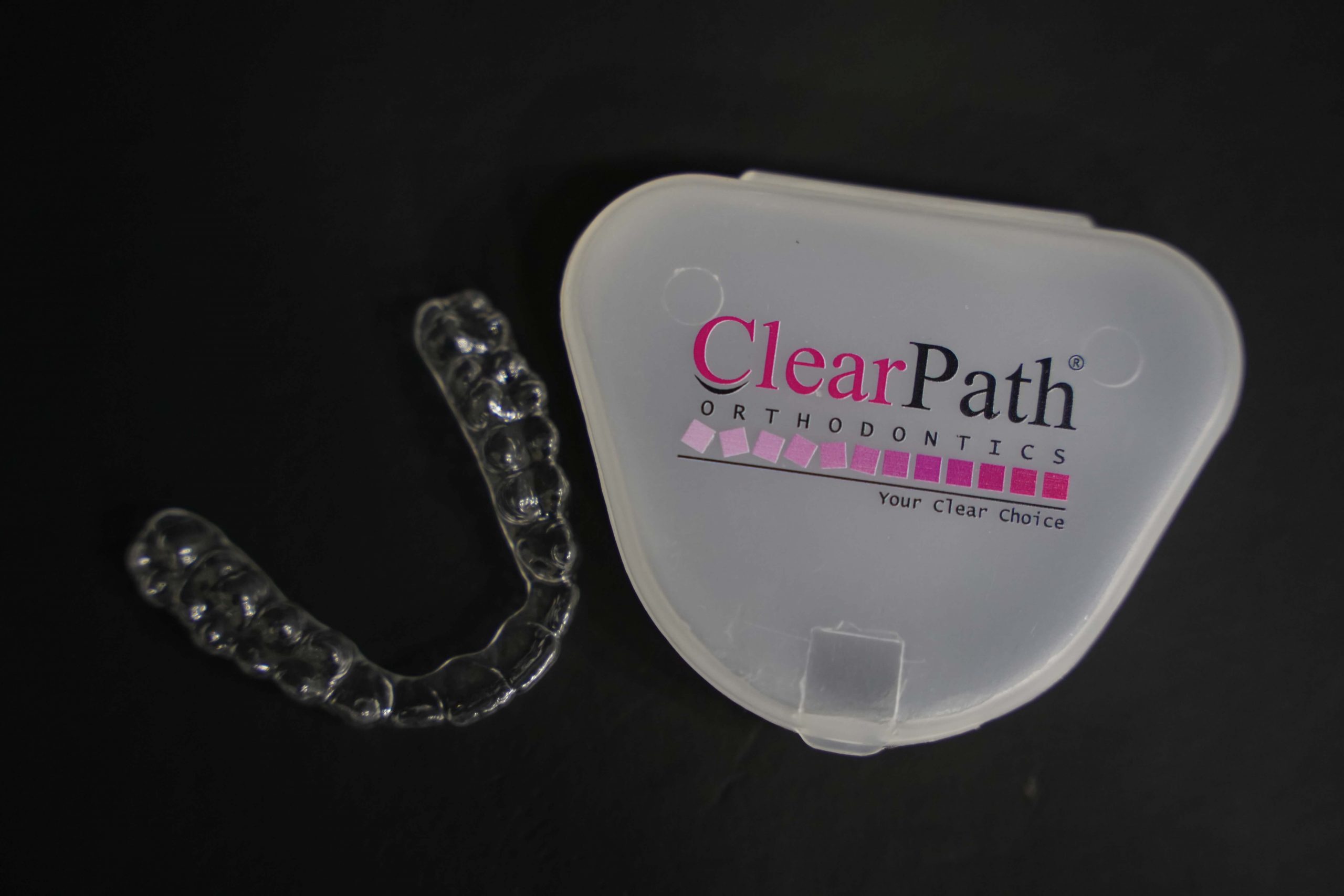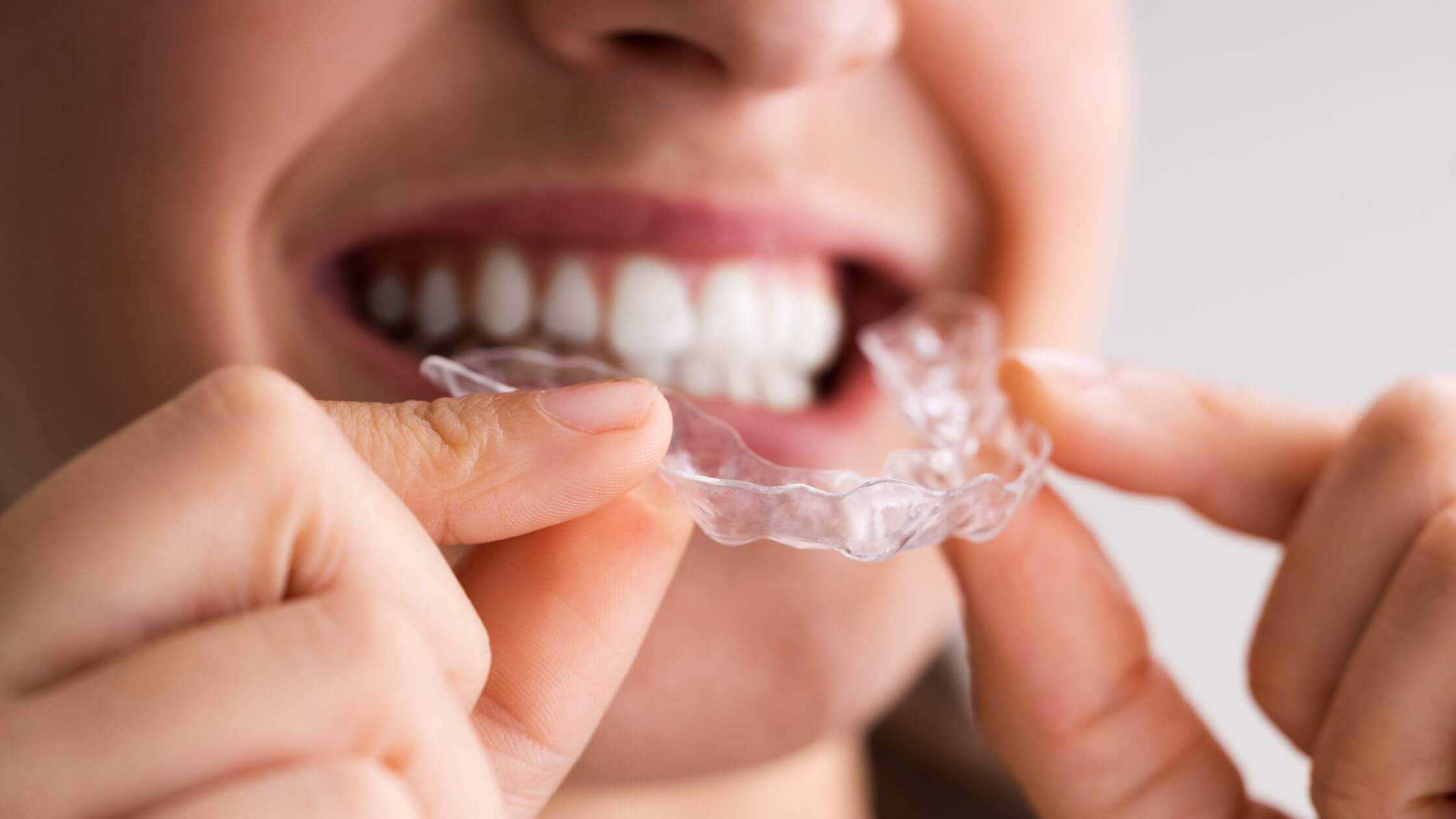Welcome to a journey through the realm of dental harmony, where the tale of misaligned teeth, known as malocclusion, unfolds.
The impact of crooked teeth extends into our daily lives, impacting not just how we chew or speak but also our self-confidence and appearance.
The physical challenges, here, encompass difficulties in chewing, speaking, and maintaining optimal oral hygiene. Understanding the gravity of this often unspoken struggle is central to seeking solutions that go beyond mere cosmetic correction.
Our smiles are more than mere aesthetics; they’re intricate compositions of nature where the alignment of our teeth takes center stage.
The journey of teeth straightening involves peeling back layers to understand the meanings, exploring causes, and unveiling an array of treatments designed to harmonize them. Restore them to their nature-intended glory 😀.
Table of Contents
ToggleUnderstanding Misaligned Teeth
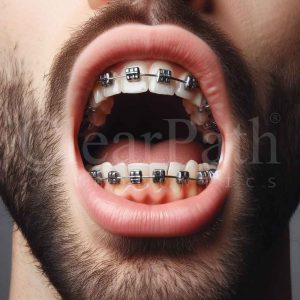
Let’s start with the basics – in order.
So…What Are Crooked Teeth?
Crooked teeth, a term we use to describe the misalignment of teeth, create a symphony of irregularities in their positioning.
Some teeth may be twisted, others tilted, a few overlapping, some spaced out, and perhaps a couple protruding. It’s a dental dance that goes beyond aesthetics, impacting both the look of your smile and the functionality of your teeth.
Also, this version of malocclusion doesn’t represent a one-size-fits-all situation. They come in various forms, each with its own impact on your oral landscape.
Types of Crooked Teeth
Here’s the full list:
Overbite
In an overbite, the upper front teeth take a little too much spotlight over the lower ones.
Underbite
Here, the lower front teeth outshine their upper counterparts.
Crossbite
This a scenario where some upper teeth decide to nibble inside the lower ones rather than outside.
Open Bite
This is a situation where a gap hangs out between the upper and lower front teeth even when your mouth is closed.
Crowding
Crowding steps in when there’s a traffic jam in your jaw – not enough room for all your teeth to cozy up comfortably.
Spacing
Spacing gives your teeth a bit too much room, introducing gaps or spaces between them.
Rotation
Rotation joins the party when a tooth decides to turn or twist in its socket.
Transposition
This occurs when a tooth boldly takes up residence in the wrong part of the dental arch.
Needless to say, all types of these misalignments become a pain when it comes to maintaining your oral cleanliness 😫.
Class Categorization of Crooked Teeth
Now, let’s get a bit technical.
We classify crooked teeth into three categories based on their severity and complexity:
- Class I – a minor misalignment where the upper and lower teeth aren’t quite in harmony, but the bite remains normal.
- Class II – a scenario where the upper teeth take a bold step forward or the lower teeth hang back, resulting in an overbite that steals the show.
- Class III – a twist in the tale where the lower teeth take the lead or the upper teeth prefer to linger in the background, creating an underbite that changes the narrative.
So, there’s more nuance here. According to a 2018 study by Alhammadi et al aimed at determining the distribution of malocclusion traits worldwide:
The global distributions of Class I, Class II, and Class III malocclusion in 2017 were 74.7% [31 – 97%], 19.56% [2 – 63%] and 5.93% [1 – 20%], respectively, in permanent dentition.
Also, wobbly teeth are not just about aesthetics. They signal a misalignment that influences both the visual and functional aspects of your jaw.
Causes of Crooked Teeth
In the intricate tapestry of dental health, the story/progression of misaligned teeth is woven by various contributors. These include a combination of inherited traits and acquired influences.
Genetics
Genetics contribute to jaw size, tooth form, and shape, potentially leading to issues like crowding.
Habits
Certain habits, such as thumb-sucking or nail-biting, can exert pressure on teeth, especially if they persist beyond early childhood.
Injuries
Whether from accidents or trauma, injuries (usually associated with inflammation and pain) can disrupt the harmony between teeth and jaw, causing misalignment.
Dental Disease
Dental problems like decay, gum disease, or improper dental care also play a role.
Tooth Loss
Tooth loss can create voids, influencing adjacent teeth to shift or tilt.
Aging
Finally, as individuals age, natural changes in tooth alignment occur, with teeth gradually shifting or wearing down over time.
Understanding these influences is the first step towards appreciating the complexities of orthodontic misalignment and seeking the right interventions when needed.
What Problems Can Crooked Teeth Cause?

Crooked teeth, beyond their cosmetic implications, unfurl a tapestry of challenges that extend to your oral health and functionality.
Difficulty Chewing and Swallowing
The alignment of teeth is crucial for effective biting and chewing, and crooked teeth can disrupt this process, making it challenging to tackle food properly. Additionally, a lack of space for the tongue can hinder the ease of swallowing, affecting the digestive system and nutritional intake.
Difficulty Speaking
Crooked teeth influence articulation, potentially leading to speech impediments such as a lisp. This directly affects clear and confident communication.
Increased Risk of Tooth Decay and Gum Disease
Cleaning crooked teeth becomes a puzzle, with nooks and crannies becoming hiding spots for food particles and plaque. This creates a breeding ground for cavities and gum inflammation, potentially leading to severe consequences like tooth loss or infections if left untreated.
Increased Risk of Tooth Wear and Damage
The uneven terrain of crooked teeth sets the stage for an easily upset balancing act. Uneven pressure during biting or grinding can result in enamel erosion, cracks, chips, fractures, and sensitivity. This risk extends beyond natural teeth to include any dental work previously undertaken.
Increased Risk of Jaw Problems
Crooked teeth negatively impact jaw muscles and joints. Left unattended, misalignments may contribute to temporomandibular joint (TMJ) disorders, ushering in significant discomfort and pain in the jaw.
Crooked Teeth Treatment Options
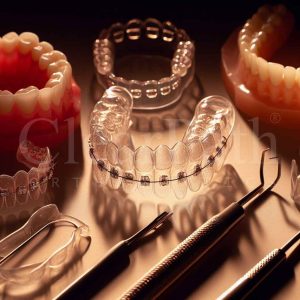
Now, crooked teeth can be fixed with various dental treatments, depending on the type and severity of the problem, as well as your personal preferences and budget.
Some of the common approaches are:
- Braces: Traditional braces, with brackets and wires, gradually straighten misaligned teeth. Effective but with drawbacks like discomfort and visibility.
- Crowns and Veneers: Dental procedures like crowns and veneers provide a more permanent solution but may involve irreversible changes to the natural tooth structure.
- Clear Aligners: Clear aligners, like those from ClearPath Orthodontics, offer a revolutionary alternative. Custom-made, removable trays gently guide teeth into position with advantages like improved comfort and minimal visibility.
- Surgery: Reserved for severe cases involving the jawbone or facial structure, surgery corrects the size, shape, or position of jaws, often combined with braces or clear aligners.
- Retainer for Crooked Teeth: Essential post-treatment devices to maintain alignment achieved through braces or clear aligners, preventing teeth from shifting.
- Crooked Teeth Treatment at Home: While clear aligners should be supervised by an orthodontist, individuals can support treatment at home by maintaining good oral hygiene, following wear schedules, and avoiding habits hindering progress. This comprehensive approach ensures effective and lasting results in the journey to straighter teeth.
Crooked Teeth and Clear Aligners
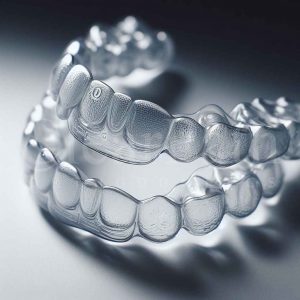
In this era of ceaseless innovation, one solution has risen to prominence in the quest for straighter smiles – clear aligners.
A 2022 study by Macri et. al. discusses the growing popularity of clear removable aligners as an aesthetic and comfortable alternative to traditional fixed appliances.
Clear Aligners vs Slightly Crooked Teeth
Not all cases of misalignment require extensive orthodontic intervention. Many individuals have slightly crooked teeth that, while not causing functional issues, may impact their confidence in their smiles. Clear aligners are especially suitable for addressing mild misalignments, offering a discreet and efficient solution.
How Long Does It Take to Fix Crooked Teeth with Clear Aligners?
The duration of clear aligner treatment varies depending on the severity of misalignment. On average, mild to moderate cases can be corrected within 6 to 12 months. This timeframe is significantly shorter than the typical duration of traditional braces, making clear aligners an appealing option for those seeking faster results
How can clear aligners be the best option to fix crooked teeth?
When it comes to tackling crooked teeth, clear aligners have earned their stripes as a popular and effective solution.
Here’s why they stand out among the array of treatments:
| Benefits | Description |
|---|---|
| Aesthetics: A Transparent Triumph | Transparent and discreet, clear aligners allow you to flaunt your smile with confidence |
| Comfort: Smooth Sailing for Your Mouth | Crafted to be smooth and custom-fitted, they glide over your teeth without causing irritation to your gums, cheeks, or tongue. Plus, they let you speak and eat without any unwarranted interference |
| Convenience: Aligned with Your Lifestyle | They’re not a permanent fixture – they’re removable. Just pop them out when brushing or eating. Cleaning is a breeze too – a simple rinse with water and a soft toothbrush does the trick |
| Control: Cutting-Edge Orthodontic Tech at Your Fingertips | Thanks to advanced technology and software, you get a sneak peek into your future smile through a 3D simulation. This interactive element extends further – you can monitor your progress, making adjustments as needed, all under the watchful guidance of your orthodontist. |
| Cost: Affordable Excellence | In the realm of affordability, clear aligners take the crown. Generally more budget-friendly than braces or veneers, they might even find coverage under your dental insurance or health savings account. |
Enjoy Safe, Advanced, and Effective Clear Aligner Treatment with ClearPath Ortho!
If the prospect of correcting your crooked teeth with clear aligners piques your interest, look no further than ClearPath Orthodontics.
A leading provider of custom clear aligners both in Pakistan and abroad, we take pride in offering high-quality, customized, and affordable clear aligner trays poised to transform both your smile and your life 🤓.
To book your invisible braces, just fill out the form below ✍.
Our friendly customer service reps will take over from there – guide you through the entire process.
And that’s it!
Your enviously straightened teeth may only be a consultation away.

